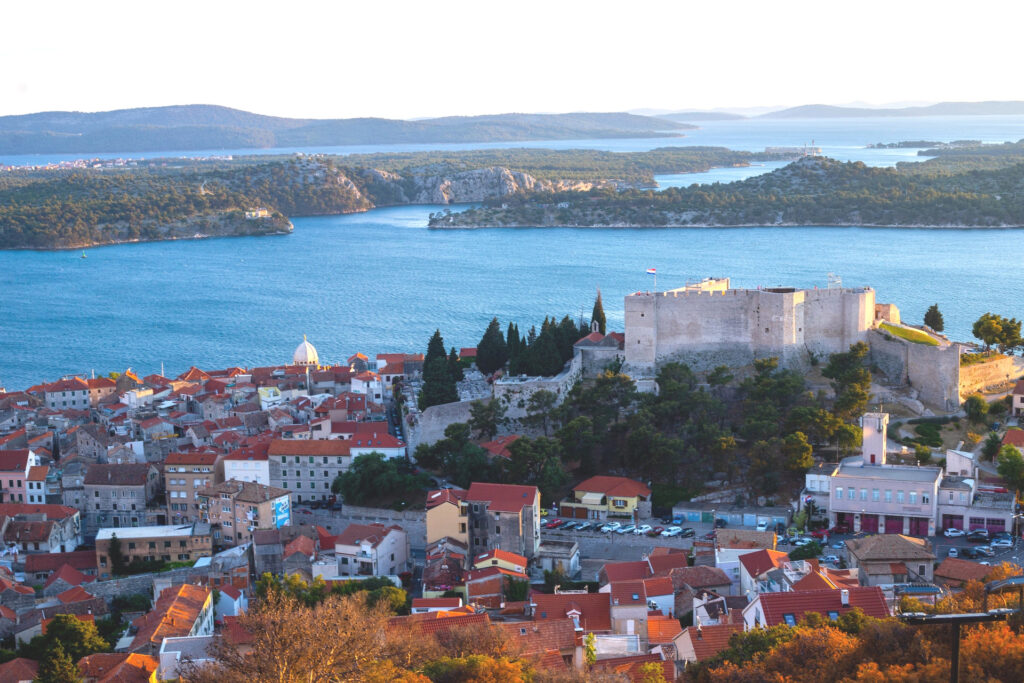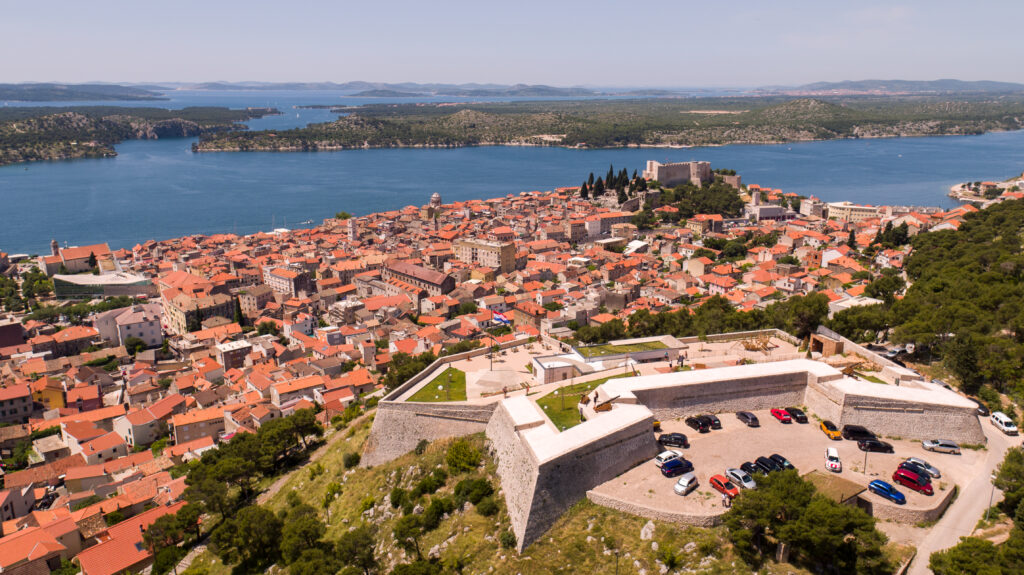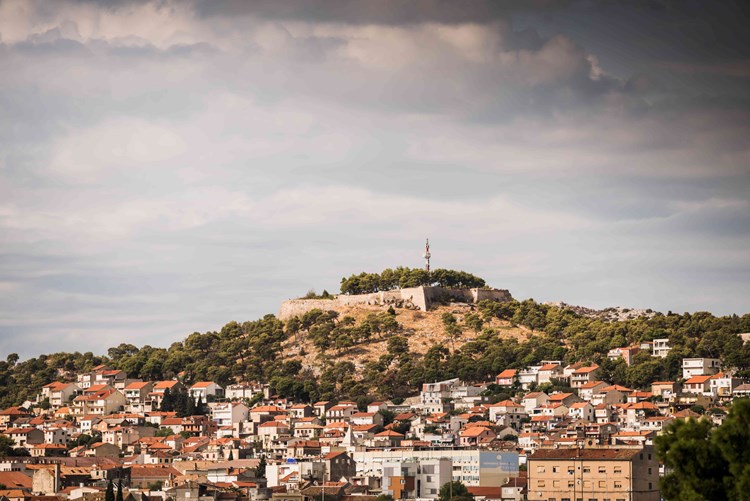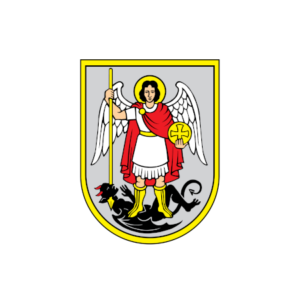
Fortress of St.Michael
Located on a hill above the city, it was built in the 15th century to defend against Turkish attacks. Today it is a popular tourist destination with a beautiful view of the city and its surroundings.
It was built on a steep rock, about seventy meters above sea level, which controls and defends the mouth of the Krka River, but also other important traffic routes to the north and south of Dalmatia. Archaeological finds suggest that it provided protection to the local population since the time of the Illyrians. It owes its name to the church dedicated to Archangel Michael, which was located inside the fortress from the earliest times. The symbolic connection between the fortress and the city is visible on several levels - from the walls of the fortress came the city ramparts that surrounded and protected Šibenik for centuries, and St. Michael has been the heavenly protector of the city since the earliest period.
Fortress of St.Michael
Located on a hill above the city, it was built in the 15th century to defend against Turkish attacks. Today it is a popular tourist destination with a beautiful view of the city and its surroundings.
It was built on a steep rock, about seventy meters above sea level, which controls and defends the mouth of the Krka River, but also other important traffic routes to the north and south of Dalmatia. Archaeological finds suggest that it provided protection to the local population since the time of the Illyrians. It owes its name to the church dedicated to Archangel Michael, which was located inside the fortress from the earliest times. The symbolic connection between the fortress and the city is visible on several levels - from the walls of the fortress came the city ramparts that surrounded and protected Šibenik for centuries, and St. Michael has been the heavenly protector of the city since the earliest period.


Fortress Barone
Barone fortress or Šubićevac fortress it is located north of the old city center Šibenika, a few hundred meters southeast of Fortress St.Ivan. It is located 80 meters above sea level, on a hill called Vidakuša, due to the fact that, before the construction of the fortress, there was a small church St.Vida.

Fortress St.John
In 1646, the Fortress of St. John, named after the small church that has been there for several centuries. It was built during August and September, in only 58 days, as the main point of the new defense system of the city immediately before the great attack of the Ottoman army. The fortress was built by the people of Šibenik with their own hands and resources, according to the design of the engineer from Genoa, Fr. Antonio Leni.
Fortress St.John
In 1646, the Fortress of St. John, named after the small church that has been there for several centuries. It was built during August and September, in only 58 days, as the main point of the new defense system of the city immediately before the great attack of the Ottoman army. The fortress was built by the people of Šibenik with their own hands and resources, according to the design of the engineer from Genoa, Fr. Antonio Leni.

In addition to these, there are some other fortresses located in the vicinity of Šibenik, such as the fortress of St. Nicholas in the Channel of St. Ante, the Poliže fortress in Šibenik and the Gradina fortress in Primošten.








